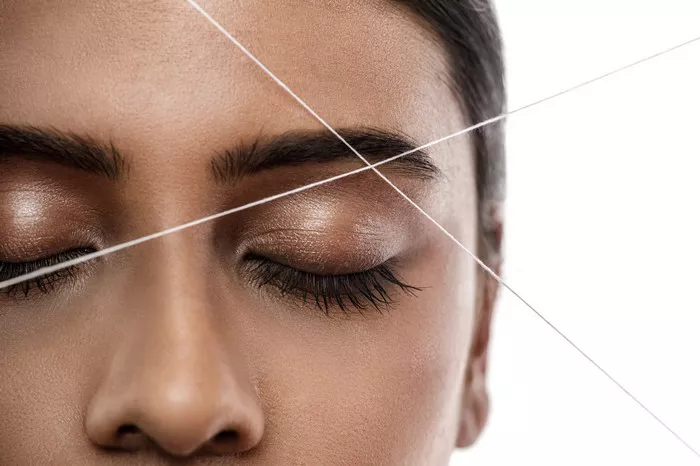Threading is a popular method for removing unwanted hair, including upper lip hair. It involves using a twisted thread to trap and remove hair from the root. While threading provides smooth and long-lasting results, some individuals may notice that their upper lip hair grows back more prominently or rapidly after the procedure. If you’re looking to minimize upper lip hair growth after threading, this article provides effective strategies to help you achieve that.
Understanding Upper Lip Hair Growth:
Upper lip hair, also known as the “moustache” or “moustache shadow,” is a common concern for many individuals, particularly women. The growth of upper lip hair can be influenced by various factors, including genetics, hormonal imbalances, and certain medical conditions. Threading is a temporary hair removal method that removes hair from the root, but it does not permanently stop hair growth. Therefore, it is natural for hair to regrow over time.
Effective Strategies to Minimize Upper Lip Hair Growth:
While complete prevention of upper lip hair growth may not be possible, there are several strategies you can implement to slow down the growth and minimize its appearance:
-
Regular Threading Maintenance
To maintain a well-groomed upper lip, it is essential to schedule regular threading sessions. Consistent threading can help remove the hair at the root and promote a slower regrowth rate. Aim for threading sessions every two to four weeks, depending on your individual hair growth cycle.
-
Consider Other Hair Removal Methods
If you find that your upper lip hair grows back quickly or appears more prominent after threading, you may explore alternative hair removal methods. Options such as waxing, depilatory creams, or professional laser hair removal can provide longer-lasting results and may slow down hair regrowth over time. Consult with a professional to determine the best method for your needs and preferences.
-
Exfoliation
Regular exfoliation of the upper lip area can help reduce hair follicle blockage and promote a smoother complexion. Exfoliating removes dead skin cells and can help discourage ingrown hairs, which can make regrowth appear more prominent. Use a gentle facial scrub or exfoliating brush to exfoliate the area once or twice a week.
-
Topical Hair Growth Inhibitors
There are certain topical products available that claim to inhibit hair growth. These products often contain ingredients like eflornithine hydrochloride, which can help slow down hair growth and make the hair appear finer. Consult with a dermatologist or skincare professional for recommendations and guidance on using these products.
-
Laser Hair Removal
Laser hair removal is a popular method for reducing unwanted hair growth. It uses targeted laser energy to destroy the hair follicles, resulting in a reduction in hair growth over time. Laser hair removal treatments typically require multiple sessions for optimal results. Consult with a professional to determine if laser hair removal is suitable for your upper lip area.
-
Hormonal Evaluation
Hormonal imbalances can contribute to excessive hair growth. If you are concerned about the growth of upper lip hair, it may be beneficial to consult with a healthcare professional to evaluate your hormonal health. They can provide guidance and recommend appropriate treatments, such as hormonal therapies or medications, if necessary.
-
Nutrition and Lifestyle
A healthy lifestyle and balanced nutrition can have an impact on overall hair growth and health. Ensure you are consuming a diet rich in vitamins, minerals, and proteins that support hair health. Additionally, managing stress levels and getting regular exercise can contribute to hormonal balance and overall well-being.
-
Avoid Tweezing or Shaving
Tweezing or shaving the upper lip hair may cause the hair to grow back thicker and more noticeable. It is best to avoid these methods and opt for hair removal techniques that target the root, such as threading or waxing.
Conclusion
While it may not be possible to completely stop upper lip hair growth after threading, several strategies can help minimize its appearance and slow down regrowth. Regular threading maintenance, considering alternative hair removal methods, exfoliation, topical hair growth inhibitors, laser hair removal, hormonal evaluation, and maintaining a healthy lifestyle can all contribute to achieving smoother and less prominent upper lip hair. Remember that each individual’s hair growth patterns and needs may vary, so it is essential to explore different options and consult with professionals for personalized advice and guidance.


